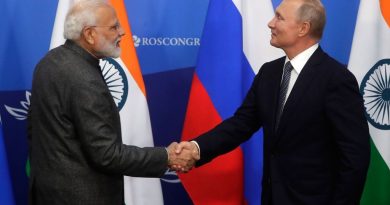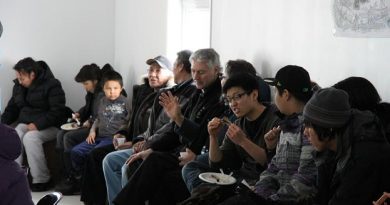Vigilant Eagle: NORAD and Russia conclude counter-terriorism exercise
The U.S., Canada, and Russia wrapped up the second-annual Exercise Vigilant Eagle on August 9. The five-day military exercise tested the countries’ response capabilities in the event of terrorists hijacking a commercial plane flying from Anchorage to Tokyo over the Bering Sea. Last year’s exercise was the first live-fly exercise between Russia and the U.S. since World War II, and the first ever between NORAD and Russia.
This year, in the exercise, a U.S.-flagged flight, called Fencing 1220, had been hijacked and was not responding to communications. The Federal Aviation Authority and the Transportation Security Agency notified NORAD (North American Aerospace Defense Command). NORAD then scrambled an AWACS (airborne warning and control system) aircraft to monitor the situation. Then, as the airplane crossed the International Date Line towards Russia, the FAA alerted the Russian Federal Air Navigational Service. In turn, the Russian Federation Air Force launched their own AWACS plane. Both the U.S. and Russia also scrambled fighter jets. The Americans sent up F-15s, while the Russians sent up SU-27s. While the Canadians did not fly any of their own jets during the exercise, they were involved through NORAD. The next day, the military games were carried out in reverse, with a plane taking off from Russia that had to be intercepted and rerouted to its country of origin.
Improved communication
The exercise tested the communication capabilities between the American E-3 AWACs and the Russian Beriev A-50 Shmels. The U.S. military and air force base in Anchorage, Joint Base Elmendorf-Richardson, which is also home to the Alaskan NORAD Region, and Petropavlovsk-Kamchatski, located on the Kamchatka Peninsula on the Bering Sea, had to communicate as well. According to reports, communication saw a marked improvement over last year, since they were able to iron out former difficulties. Last year, for instance, the Canadians seemed to have a tough time convincing the Russians that NORAD was not just a U.S. operation. Canadian Colonel Todd Balfe, the deputy commander for the Alaska NORAD Region, wrote in a report on last year’s Exercise Vigilant Eagle that it was “challenging, for example, to explain to Russian officers the bi-national nature of this organization and to fully convince them that air defence was indeed a shared U.S.-Canadian responsibility.” Indeed, a blogger for the Ottawa Citizen asked, “Where are the Canadians?”
The 2010 and 2011 exercises show that North America, particularly Canada, and Russia have come a long way since February 2009, when NORAD detected two Russian Tupolev-160 fighter jets outside Canadian airspace and scrambled two CF-18s. What’s more, the exercise was first supposed to take place in the summer of 2008, but the Russian invasion of Georgia prevented that from happening. Colonel Balfe remarked on the tensions between the three countries in his report on last year’s exercise, saying, “Accordingly, a measure of uncertainty and a perceptible note of suspicion were evident to military planners as the exercise was resurrected.”
Developing better relations
Through the lens of this exercise, then, the “reset button” has been pressed in American-Russian relations, but in fact, the foundation for greater cooperation between the American and Russian militaries was set all the way back in 2003 during a meeting between President George W. Bush and President Vladmir Putin at Camp David.
Last year, Colonel Alexander Vasilyev, deputy director of security and safety for the Russian air force, said,
“Terrorism is something that affects all our countries, so it is very important that we work together to develop procedures and bring the relationship between our countries closer together to unite our countries in the fight against terrorism.”
With over 1,000 flights a day over Alaska heading both north and east, it is important that the three countries in the region are able to cooperate. Increased cooperation in the skies could also spur greater collaboration at sea, where the traffic could really pick up over the coming decade. Finally, these exercises are another step further in military cooperation between the Arctic states. The Nordic countries also carry out military exercises at least once a year, as do Canada and Denmark. With more military games like these, actual military conflicts might be avoided.
News Links:
“US and Russia hold joint anti-terror drills,” Voice of Russia
“Canada, Russia, U.S. overcome ‘suspicions’ in the Arctic,” CTV Winnipeg
“Partnered again – Russia and NORAD conduct Exercise Vigilant Eagle 2011,” Alaskan NORAD Region Public Affairs




